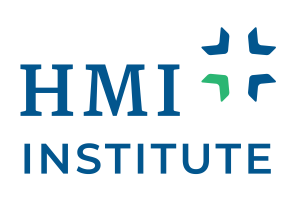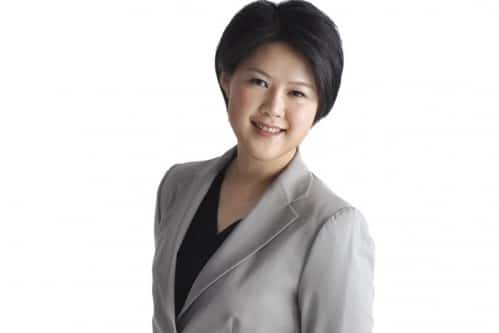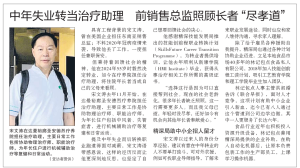Ms Chin Wei Jia, the group chief executive of SGX-listed private healthcare provider Health Management International (HMI), happens to be a photography buff.
“In photography, it’s all about capturing that particular moment, and through travel, you learn about different perspectives. It’s the same in the healthcare industry – we need to be able to put ourselves in someone else’s shoes, in this case, the patients’, and look at providing the service from their perspective.”
Her passion for healthcare is embodied in HMI’s vision of improving the lives of patients through quality services.
“I believe HMI’s value comes through contributing to the wider community. As healthcare providers, we’re not just a for-profit business – we’re also providing services for the betterment of the communities we operate in,” she said.
HMI first began operations in Singapore in 1991 with HMI Balestier Hospital, formerly known as Balestier Medical Centre.
In 1998, it acquired a stake and a five-year management contract in Mahkota Medical Centre, a loss- making hospital in Malacca, after which it carried out a restructuring exercise. A year later, HMI listed on Singapore Exchange’s smaller board, called Sesdaq.
Ms Chin, 38, joined HMI in 2002 as a management trainee, after a phone call from her mother – HMI executive chairman Gan See Khem. At the time, Ms Chin, a master’s graduate in international relations from Johns Hopkins University, was considering doing her PhD or applying for a job in a multi-national corporation.
GOING REGIONAL
HMI adapted the Singapore private hospital business model for Malaysia. Mahkota was one of the first hospitals across the Causeway to sell medical suites to doctors, and also one of the early movers in attracting patients from Indonesia.
Mahkota began operations in 1994, but HMI came in from 1998 to manage it, and successfully achieved a turnaround within a few years. Today, it is one of Malaysia’s most profitable hospitals, and a recognised medical tourism hub in the country.
After growth opportunities for a secondary-care hospital in Singapore were crimped by the fallout from the 1998 Asian financial crisis, HMI Balestier Hospital was converted to the HMI Institute of Health Sciences by 2005 to provide healthcare education and training.
HMI spotted the huge potential in the Malaysian healthcare market, and in 2007, acquired a stake in Regency Specialist Hospital – an empty hospital building in east Johor at the time.
“We’re focused on providing the middle-income segment with value-for-money and quality healthcare, ensuring our patients receive good treatment and service,” said Ms Chin, who was appointed group CEO last September. “Our business model centres on partnering doctors in the industry, as they are independent practitioners, and through these partnerships, growing together with them.”
HMI, which was upgraded to the SGX mainboard in 2008, aims to develop and build comprehensive tertiary hospitals offering specialty and sub-specialty services.
“We want patients to feel they can come to our hospitals and resolve most, if not all, their problems, rather than be referred somewhere else,” she added.
With this in mind, one key characteristic of HMI hospitals is same- day surgeries, which help save time and limit travel costs for foreign patients. Its key patient pool in Mahkota Medical Centre comprises 75 per cent locals, with the remainder mainly from Indonesia.
BURGEONING GROWTH
HMI has a current market capitalisation of about $250 million. Its shares have registered a dividend- inclusive total return of 26.1 per cent in the year to date, compared with 1.8 per cent for the benchmark Straits Times Index.
Between the financial years ended June 30, 2011 and last year, the firm grew its revenues from RM174 million (S$58.5 million) to RM345 million. Its profit after tax rose from RM2 million to RM28 million over the same period.
HMI’s key assets comprise two tertiary hospitals – the 288-bed Mahkota Medical Centre and the 218-bed Regency Specialist Hospital. It has more than 170 practising consultants who serve close to 400,000 patients a year. Its competitors include IHH Healthcare, KPJ Healthcare, Ramsay Sime Darby Health Care and other independent tertiary hospitals.
INVEST AND INNOVATE
Medical tourism will be another key growth driver for the healthcare sector, as the country is viewed as a target destination by Indonesian patients. “Due to the ringgit exchange rate, Malaysia, as a healthcare destination, is very price-competitive versus the rest of Asia,” Ms Chin said.
Between 2011 and 2014, the number of medical tourists to Malaysia increased from 641,000 to 882,000 a year. In 2014, medical tourism brought in revenues amounting to RM730 million from more than 880,000 arrivals.
The country’s medical tourism market is expected to expand at a compounded annual growth rate of 18.5 per cent between 2014 and 2020, according to estimates from Frost & Sullivan.
HMI plans to boost bed capacity in Mahkota and Regency to meet rising patient demand, as well as develop centres of excellence, such as cancer treatment facilities.
Challenges, however, abound in an industry that is one of the most heavily regulated in the world. Escalating costs is another bugbear.
She said: “Operating expenses are inflated by higher import fees from the ringgit exchange rate, while wages continue to increase.
“These pressures are manageable, for now, as we’ve achieved economies of scale and cost efficiencies throughout the group, but I expect this to become more of a challenge, going forward.”





